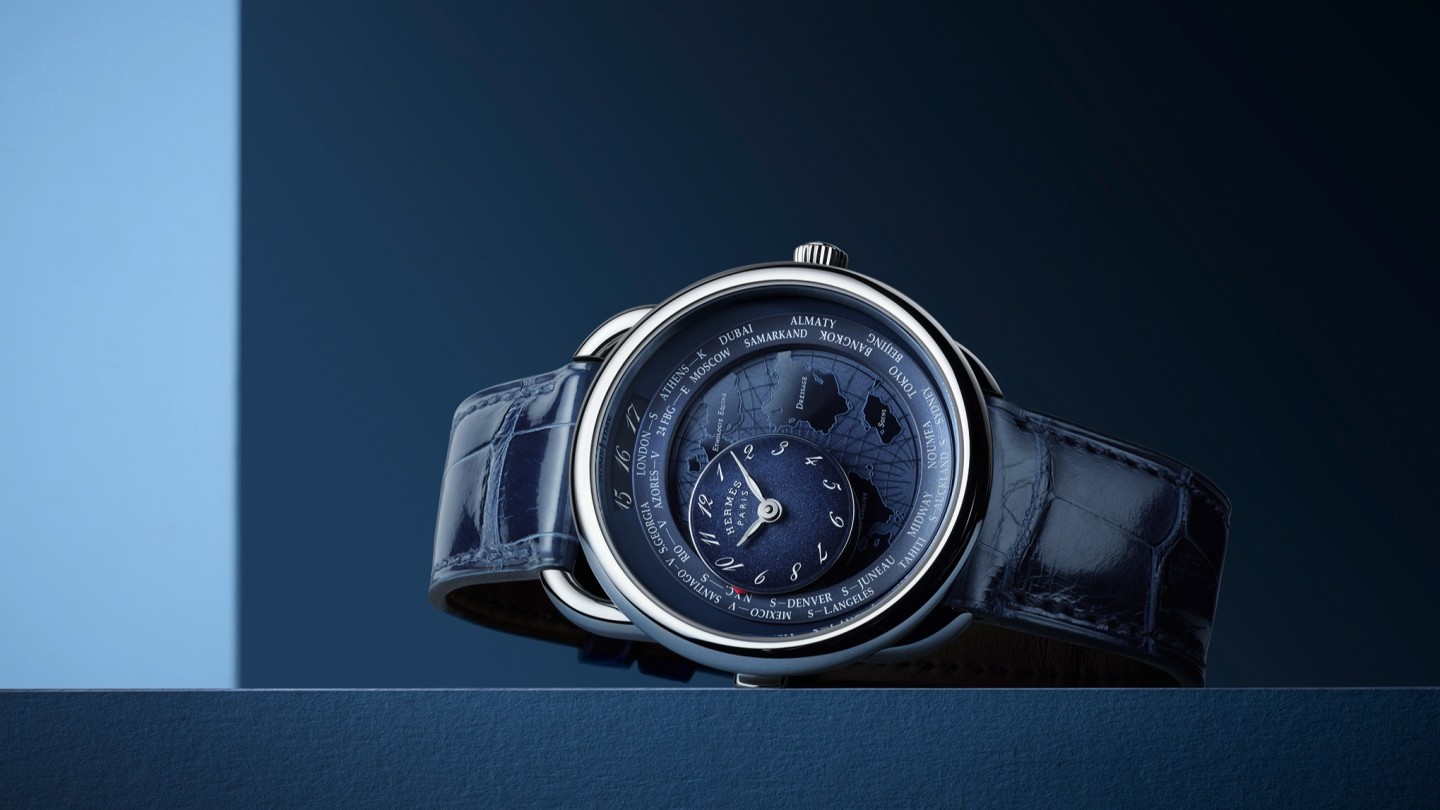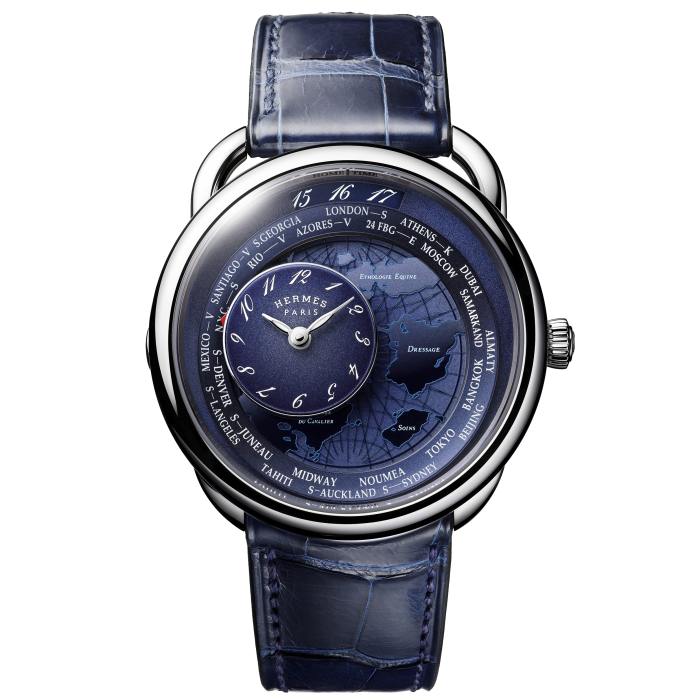Hermès rethinks time travel

Roula Khalaf, Editor of the FT, selects her favourite stories in this weekly newsletter.
Holding up the new Hermès Arceau Le Temps Voyageur travel time watch, Pierre-Alexis Dumas, artistic director of Hermès, pushes a button on the side of the case. With each press, what is, in effect, a miniature watch within a watch orbits the inner circumference of the dial, stopping on the name of one city after another, and giving the correct hour of the day in that particular time zone.
The family resemblance to the Arceau L’Heure de la Lune – the hit Hermès watch of 2019 – is plain. In that watch, two subdials, one showing the time, the other the date, circle a meteorite dial decorated with two moons, which are incrementally concealed and revealed according to the movements of the time and date discs, to give the phases of the moon in both the northern and southern hemispheres.
On this year’s travel watch, home time is displayed numerically through a window at 12 o’clock, but the whimsical charm resides in the hovering disc that voyages around the inner part of the dial, correcting itself to the appropriate time when it stops at one of the cities marked on the inner flange. It is a very Hermès take on a long-established complication. More Hermès still is that this is not the world of logical quotidian geography, but the world as viewed from the Rue du Faubourg St Honoré, home to the brand’s flagship store. “We changed the names for the time zones around the dial,” says Dumas. “They’re not the usual names. For example, instead of putting Paris, we put 24 Rue du Faubourg St Honoré. In the different time zones, we chose cities that we like” – locations that brim with exotic promise, such as Samarkand.

And then there is the map. Maps often appear on watch dials. Sometimes they are engraved, sometimes enamelled; but they are usually recognisable in their adherence to geographic norms. For the Arceau, the time rotates over a fantastical map of an imaginary planet engraved on the dial.
The return of travel makes this a propitious time to bring out a wanderlust watch, even if you’re not quite ready to go back to the departure lounge. Says Dumas: “You can push the button and imagine that you’re travelling all around the world.”
It brings to mind a line from JK Huysmans’ decadent symbolist novel of 1884, A Rebours. Its protagonist, the languid, decadent nobleman Des Esseintes, believes that the pleasure of travel exists “only in recollection and almost never in the present, at the actual moment when it is taking place. Besides, he considered travel to be pointless, believing that the imagination could easily compensate for the vulgar reality of actual experience.”
I think Des Esseintes would have enjoyed Hermès’s Arceau Le Temps Voyageur.
Comments